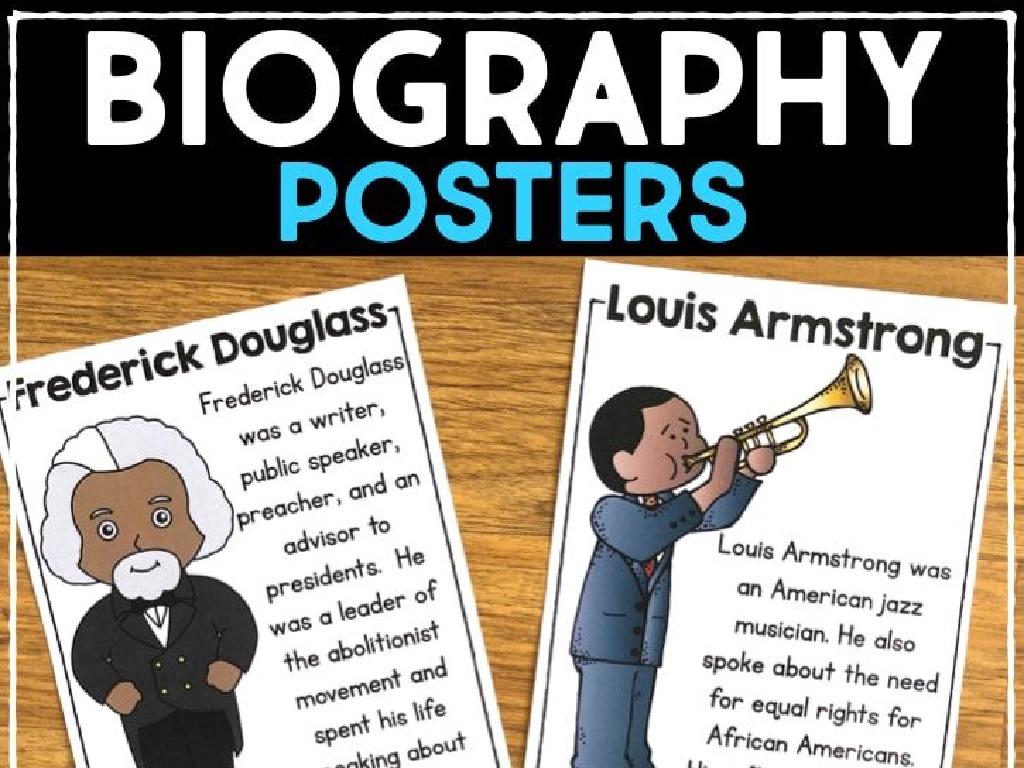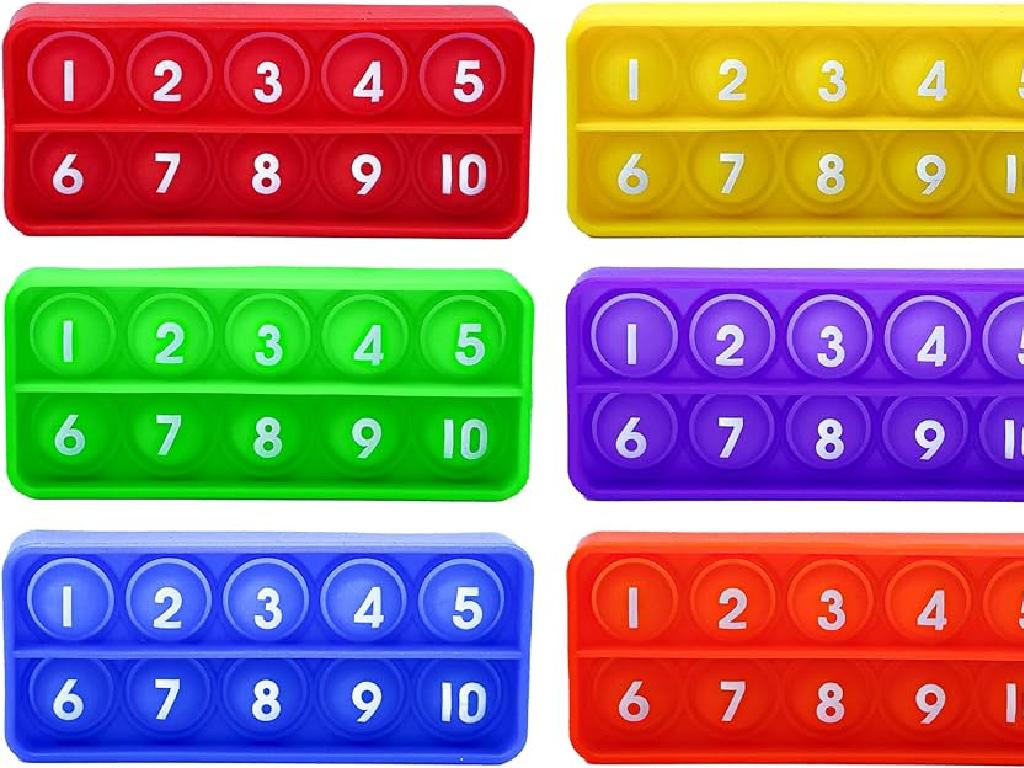Multi-Step Word Problems: Identify Reasonable Answers
Subject: Math
Grade: Fourth grade
Topic: Multi-Step Word Problems
Please LOG IN to download the presentation. Access is available to registered users only.
View More Content
Multi-Step Word Problems: Finding Reasonable Answers
– Understanding multi-step problems
– A problem with more than one step to solve.
– Importance of problem-solving steps
– Steps help break down complex problems.
– Today’s goal: Reasonable answers
– Learn to judge if an answer makes sense.
– Practice with examples
|
This slide introduces students to the concept of multi-step word problems in math, emphasizing the importance of understanding the sequence of operations required to find a solution. It’s crucial for students to recognize that some problems require more than one step to solve, and breaking down the problem into smaller, manageable parts can help in finding the correct answer. Today’s objective is to help students not just solve problems, but also to evaluate their answers to see if they are reasonable given the context of the problem. Provide examples of multi-step word problems and guide students through the process of solving them, ensuring they understand why each step is necessary. Encourage students to ask themselves if their answers make sense, which will help them develop critical thinking skills.
Understanding Multi-Step Word Problems
– Multi-step problems explained
– Problems needing more than one step to find the answer
– May include all 4 operations
– Addition, subtraction, multiplication, and division could be used
– Example: Buying toys with $20
– If 3 toys cost $5 each, how much is spent and how much is left from $20?
– Solving for the change received
– Subtract the total cost of toys from $20 to find the change
|
This slide introduces students to multi-step word problems, which are problems that require more than one mathematical operation to solve. These can involve any combination of addition, subtraction, multiplication, or division. Use the example provided to illustrate how to approach such problems: first, multiply the cost of one toy by the number of toys to find the total cost, then subtract this total from the initial amount of money to find the change. Encourage students to identify keywords and operations required for each step. This will help them understand the sequence of actions needed to reach a solution.
Solving Multi-Step Word Problems
– Read the problem carefully
– Take your time to go through the problem. Don’t rush.
– Understand the question asked
– What is the final thing you need to find out?
– Plan the steps to solve
– Think about the operations needed to find the answer.
– Solve each step sequentially
– Tackle one part of the problem at a time for accuracy.
|
This slide is aimed at guiding fourth-grade students through the process of solving multi-step word problems. Emphasize the importance of reading the problem thoroughly to avoid missing key details. Encourage students to underline or highlight what the problem is specifically asking for. Discuss how to break down the problem into manageable steps, deciding which mathematical operations to use. Remind them to solve each step in order, checking their work as they go. Provide examples of multi-step problems and solve them together as a class. Offer strategies for checking their work, such as estimating the answer beforehand or using the inverse operation to verify their solution.
Identifying Reasonable Answers in Word Problems
– Understanding reasonable answers
– A reasonable answer fits logically within the problem’s context.
– Relating answers to the problem context
– Does the solution align with the story’s details?
– Estimating to predict answer range
– Use estimation to determine a possible answer span before solving.
– Checking reasonableness post-solution
– After solving, reassess to ensure the answer is logical.
|
This slide is aimed at teaching students how to identify reasonable answers in multi-step word problems. Start by discussing what makes an answer reasonable, emphasizing that it should make sense within the context of the problem. Encourage students to always relate their final answer back to the story to see if it fits logically. Teach them to estimate a solution before solving to have an expected range of answers, which helps in checking their work. After finding a solution, students should reassess their answer to confirm its reasonableness. Provide examples of unreasonable answers and discuss why they don’t fit the problem context. This will help students develop critical thinking skills when approaching word problems.
Solving Multi-Step Word Problems
– Understand the problem
– Read carefully and know what’s being asked
– Break down into steps
– Identify what calculations are needed
– Solve the problem
– Use math skills to find the answer
– Discuss reasonableness
– Does the answer make sense? Why?
|
This slide is aimed at guiding students through the process of solving multi-step word problems. Start by reading the problem thoroughly to understand what is being asked. Next, break the problem down into manageable steps, identifying the operations needed to find the solution. Then, apply math skills to solve each step of the problem. Finally, discuss with the class why the answer is reasonable by considering if it makes sense in the context of the problem. For example, if the problem involves combining groups of items, does the final number seem too high or too low? Encourage students to always check their work and consider the reasonableness of their answers.
Practice Time: Solving Together!
– Pair up for problem-solving
– Write down each problem-solving step
– Discuss the reasonableness of your answer
– Did the answer make sense in the real world?
– Share your thoughts with the class
|
This slide is designed to engage students in collaborative problem-solving, reinforcing their understanding of multi-step word problems and the importance of reasonable answers. Have the students pair up and work through a new word problem together. Encourage them to write down the steps they take to solve the problem, as this will help them track their thought process and make it easier to explain their reasoning. After solving, they should discuss with their partner why they believe their answer is reasonable, considering if it makes sense in a real-world context. Finally, invite pairs to share their problem-solving process and reasoning with the class, fostering a collaborative learning environment where students can learn from each other’s approaches and insights.
Class Activity: Problem-Solving Relay
– Form small problem-solving groups
– Solve a problem part by part
– Pass the problem to the next group
– Discuss the reasonableness of the final answer
– Why does the answer make sense? Could it happen in real life?
|
This activity is designed to encourage teamwork and critical thinking as students work together to solve multi-step word problems. Divide the class into small groups, and give each group a different part of a larger problem to solve. Once a group completes their part, they will pass their work to the next group. This continues until the problem is completely solved. The final step is for students to discuss as a class whether the answer is reasonable, considering if it could logically occur in real-life situations. For the teacher: prepare different multi-step problems beforehand, ensure each part is clearly defined, and provide guidance on how to evaluate the reasonableness of an answer. Possible activities could include shopping scenarios, building projects, or planning events, each requiring multiple steps to reach a solution.
Reflecting on Multi-Step Word Problems
– Key takeaways from multi-step problems
We learned to break down problems into smaller steps and solve them one by one.
– Importance of reasonable answers
Finding reasonable answers helps us check our work and ensures our solutions make sense.
– Share a personal takeaway
Think of one strategy or tip that helped you the most.
– Apply knowledge in future problems
Use what we’ve learned to tackle new problems with confidence.
|
In this concluding slide, we reflect on the importance of understanding multi-step word problems. We’ve learned that breaking down complex problems into manageable steps is crucial for finding the solution. Recognizing reasonable answers is not just about getting the right answer; it’s about understanding the process and ensuring our solutions are logical. Encourage students to share their personal takeaways, focusing on strategies or insights that they found helpful. This reflection will help solidify their learning and prepare them to apply these skills to future problems. As a teacher, provide examples of how these skills can be used in real-life situations to further emphasize their value.





